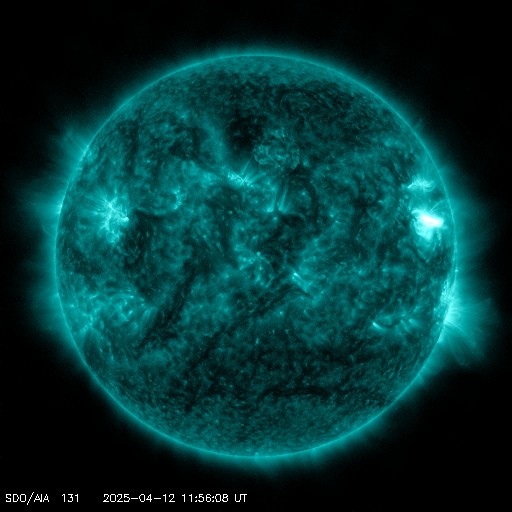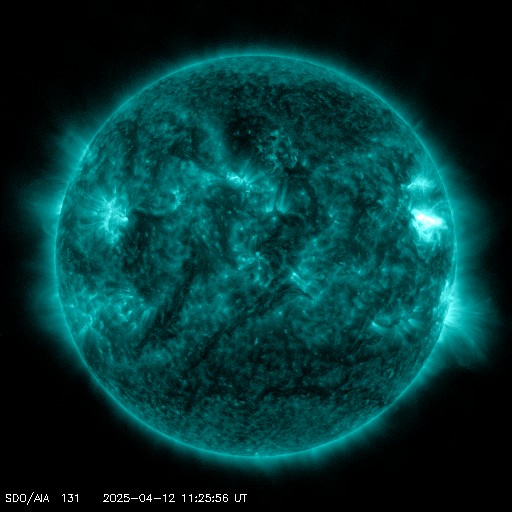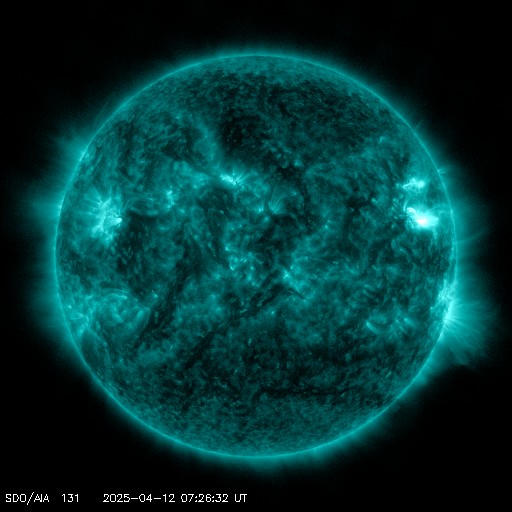Viewing archive of Friday, 22 November 2002
Solar activity report
Any mentioned solar flare in this report has a scaling factor applied by the Space Weather Prediction Center (SWPC). Because of the SWPC scaling factor, solar flares are reported as 42% smaller than for the science quality data. The scaling factor has been removed from our archived solar flare data to reflect the true physical units.
Report of Solar-Geophysical Activity 2002 Nov 22 2200 UTCPrepared by the NOAA © SWPC and processed by SpaceWeatherLive.com
Joint USAF/NOAA Report of Solar and Geophysical Activity
SDF Number 326 Issued at 2200Z on 22 Nov 2002IA. Analysis of Solar Active Regions and Activity from 21-2100Z to 22-2100Z
Solar activity was at low levels. Region 198 (S18W12)
produced the largest flare of the period, a C3.4/Sf flare occurring
at 22/1542 UTC. Region has shown decay this period as penumbral
coverage has decreased and gamma portion of the magnetic field has
become less discernable, although it is still intact. Region 201
(S16W22) showed some growth today adding several umbra to group's
total spot count. No new spot groups were numbered today.
IB. Solar Activity Forecast
Solar activity is expected to be at
low levels. Region 198 has the potential to produce M-class flare
activity.
IIA. Geophysical Activity Summary 21-2100Z to 22-2100Z
The geomagnetic field was at unsettled to minor storm levels. The
transequatorial coronal hole in the western solar hemisphere
continues to elevate the high speed solar wind (today's approximate
average speed of 625 km/s). The greater than 2 MeV electron flux at
geosychronous orbit reached high levels today.
IIB. Geophysical Activity Forecast
The geomagnetic field is
expected to be at quiet to active levels. Isolated minor storm
conditions (mostly at high latitudes) are possible through day one
as the magnetosphere continues to be under the influence of the high
speed solar wind. Days two and three should return to quiet to
unsettled conditions as the high speed stream wanes. The greater
the 2 MeV electron flux at GOES should reach daily moderate to high
levels throughout the forecast period.
III. Event Probabilities 23 Nov to 25 Nov
| Class M | 40% | 40% | 40% |
| Class X | 05% | 05% | 05% |
| Proton | 01% | 01% | 01% |
| PCAF | green | ||
IV. Penticton 10.7 cm Flux
Observed 22 Nov 149 Predicted 23 Nov-25 Nov 150/155/165 90 Day Mean 22 Nov 173
V. Geomagnetic A Indices
Observed Afr/Ap 21 Nov 022/050 Estimated Afr/Ap 22 Nov 020/025 Predicted Afr/Ap 23 Nov-25 Nov 015/015-010/010-010/010
VI. Geomagnetic Activity Probabilities 23 Nov to 25 Nov
| A. Middle Latitudes | |||
|---|---|---|---|
| Active | 30% | 20% | 20% |
| Minor storm | 10% | 05% | 05% |
| Major-severe storm | 05% | 01% | 01% |
| B. High Latitudes | |||
|---|---|---|---|
| Active | 35% | 20% | 20% |
| Minor storm | 15% | 10% | 10% |
| Major-severe storm | 05% | 01% | 01% |
All times in UTC
Current data suggests there is a slight possibility for aurora to appear at the following high latitude regions in the near future
Anchorage, AKLatest news
Latest forum messages
AR 4055 42CME 19Filaments and prominences 3Filaments and prominences (old topic) 756Unspecified geomagnetic activity 2239
More topicsSupport SpaceWeatherLive.com!
A lot of people come to SpaceWeatherLive to follow the Sun's activity or if there is aurora to be seen, but with more traffic comes higher server costs. Consider a donation if you enjoy SpaceWeatherLive so we can keep the website online!

Latest alerts
12:39 UTC - Radio Blackout
Minor R1 radio blackout in progress (≥M1 - current: M1.18)
12:03 UTC - Solar flare
Moderate M2.7 flare
11:36 UTC - Solar flare
Moderate M2.08 flare
11:18 UTC - Radio Blackout
Minor R1 radio blackout in progress (≥M1 - current: M1.82)
07:39 UTC - Solar flare
Moderate M1.03 flare from sunspot region 4055
Space weather facts
| Last X-flare | 2025/03/28 | X1.1 |
| Last M-flare | 2025/04/12 | M2.0 |
| Last geomagnetic storm | 2025/04/06 | Kp5 (G1) |
| Spotless days | |
|---|---|
| Last spotless day | 2022/06/08 |
| Monthly mean Sunspot Number | |
|---|---|
| March 2025 | 134.2 -20.4 |
| April 2025 | 139.5 +5.3 |
| Last 30 days | 136.6 -3.5 |





